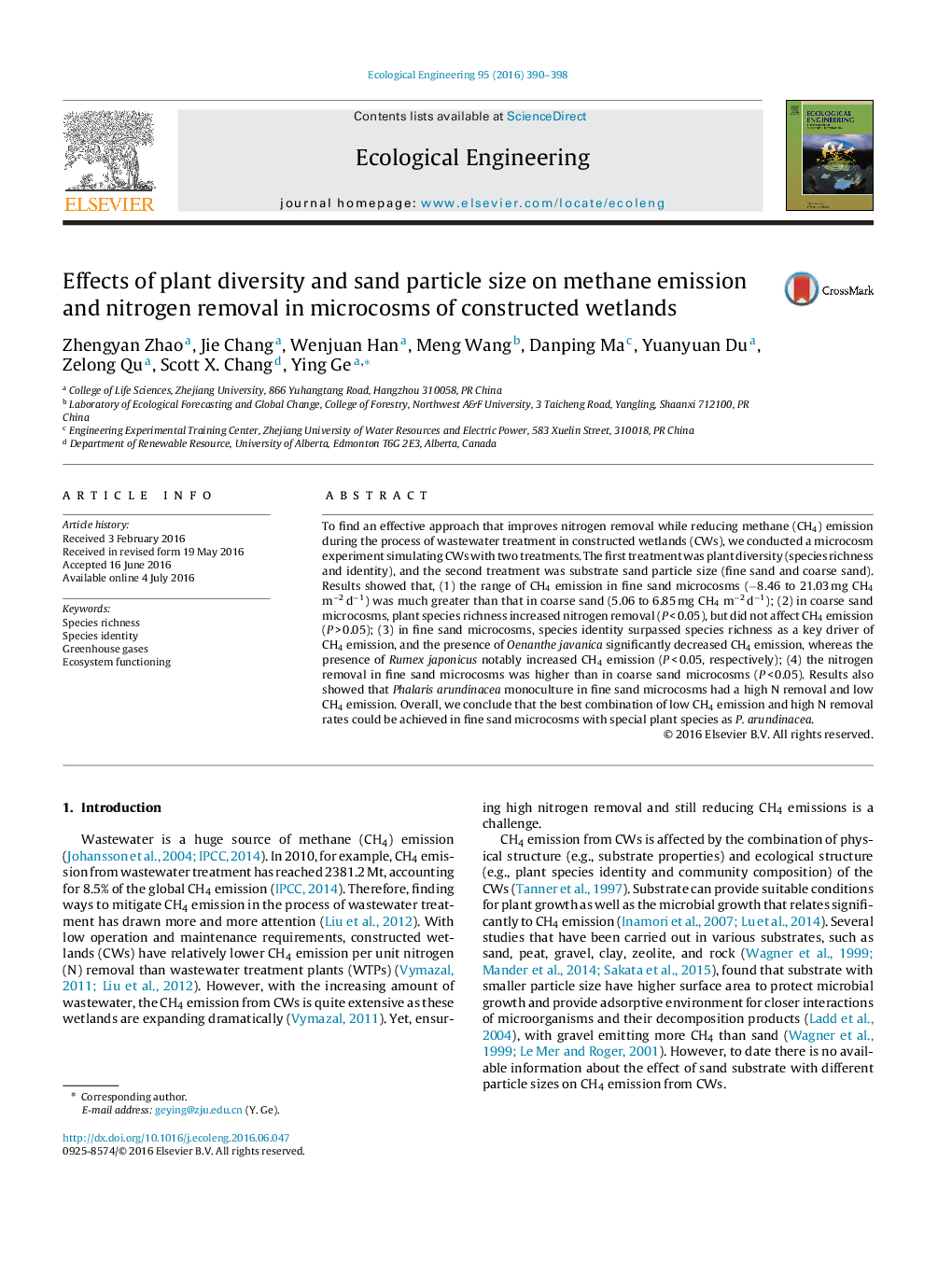| کد مقاله | کد نشریه | سال انتشار | مقاله انگلیسی | نسخه تمام متن |
|---|---|---|---|---|
| 4388464 | 1618004 | 2016 | 9 صفحه PDF | دانلود رایگان |
• Species identity surpasses species richness in driving CH4 emission in fine sands.
• Species identity and species richness did not affect CH4 emission in coarse sands.
• Phalaris arundinacea monoculture emitted low CH4 with high N removal in fine sands.
• Species richness increased nitrogen removal in coarse but not in fine sands.
• Mean N removal in fine sands was higher than coarse sand microcosms.
To find an effective approach that improves nitrogen removal while reducing methane (CH4) emission during the process of wastewater treatment in constructed wetlands (CWs), we conducted a microcosm experiment simulating CWs with two treatments. The first treatment was plant diversity (species richness and identity), and the second treatment was substrate sand particle size (fine sand and coarse sand). Results showed that, (1) the range of CH4 emission in fine sand microcosms (−8.46 to 21.03 mg CH4 m−2 d−1) was much greater than that in coarse sand (5.06 to 6.85 mg CH4 m−2 d−1); (2) in coarse sand microcosms, plant species richness increased nitrogen removal (P < 0.05), but did not affect CH4 emission (P > 0.05); (3) in fine sand microcosms, species identity surpassed species richness as a key driver of CH4 emission, and the presence of Oenanthe javanica significantly decreased CH4 emission, whereas the presence of Rumex japonicus notably increased CH4 emission (P < 0.05, respectively); (4) the nitrogen removal in fine sand microcosms was higher than in coarse sand microcosms (P < 0.05). Results also showed that Phalaris arundinacea monoculture in fine sand microcosms had a high N removal and low CH4 emission. Overall, we conclude that the best combination of low CH4 emission and high N removal rates could be achieved in fine sand microcosms with special plant species as P. arundinacea.
Journal: Ecological Engineering - Volume 95, October 2016, Pages 390–398
